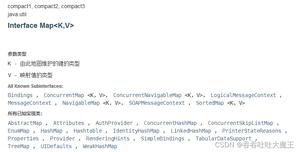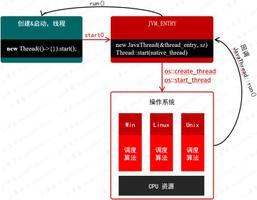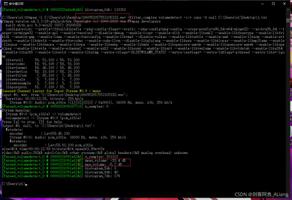MOOC_Java进阶_翁恺讲_第三周题

package mooc_java进阶_d3周题;/**
* 没有使用HashMap
*/
import java.util.ArrayList;
import java.util.Scanner;
public class Main {
public static void main(String[] args) {
Scanner in = new Scanner(System.in);
String stopSymbol = "###";
int cityNumbers = 0;
boolean goOn = true;
ArrayList<String> citys = new ArrayList<String>();
while (goOn) {
String cityOnly = in.next();
if (cityOnly.equals(stopSymbol)) {
break;
} else {
citys.add(cityOnly);
}
}
cityNumbers = citys.size();
int n = cityNumbers;
Scanner in1 = new Scanner(System.in);
int allN = n * n;
int[] matrix = new int[allN];
for (int i = 0; i < matrix.length; i++) {
matrix[i] = in1.nextInt();
}
Scanner in3 = new Scanner(System.in);
String[] twoCitys = new String[2];
twoCitys[0] = in3.next();
twoCitys[1] = in3.next();
int count = 0;
int firstCityIndex = 0;
int secondCityIndex = 0;
for (int j = 0; j < 2; j++) {
for (int i = 0; i < n; i++) {
if (citys.get(i).equals(twoCitys[j])) {
count++;
if (count == 1) {
firstCityIndex = i;
} else if (count == 2) {
secondCityIndex = i;
} else {
}
}
}
}
int leftCityIndex = 0;
int rightCityIndex = 0;
int city_D_value = 0;
int li;
int liInMat;
if (firstCityIndex < secondCityIndex) {
leftCityIndex = firstCityIndex;
li = leftCityIndex;
liInMat = li * n + li;
city_D_value = secondCityIndex - firstCityIndex;
rightCityIndex = liInMat + city_D_value;
} else if (firstCityIndex > secondCityIndex) {
leftCityIndex = secondCityIndex;
li = leftCityIndex;
liInMat = li * n + li;
city_D_value = firstCityIndex - secondCityIndex;
rightCityIndex = liInMat + city_D_value;
} else {
}
int distance = matrix[rightCityIndex];
if (distance != 0) {
System.out.print(distance);
} else {
System.out.println("0");
}
in.close();
}
}
上面这个没有通过在线验证,不过我本机试着还行.可能是有些问题吧,写得太杂了
之后看了其他人用HashMap实现的,我尝试了下,不过最终还是比他们大神写的要长很多:不过也很满足已经通过了测验:
package mooc_java进阶_d3周题;/**
* 使用了HashMap
*/
import java.util.ArrayList;
import java.util.HashMap;
import java.util.Map;
import java.util.Scanner;
public class Main4 {
public static void main(String[] args) {
Main4 m = new Main4();
// STEP 1 : 用基础方法去模拟方法实现
Scanner in = new Scanner(System.in);
ArrayList<String> citys = new ArrayList<String>();
boolean go = true;
String oneOfcity;
String stopSymbol = "###";
while (go) {
oneOfcity = in.next();
if (oneOfcity.equals(stopSymbol)) {// 如果这轮输入的单个城市是###休止符
break;//
}
citys.add(oneOfcity);
}
int n = citys.size();// 获取城市数量
int numOfCitys = n * n;// 获取城市矩阵距离数量
// STEP 2 : 获取矩阵数字
ArrayList<Integer> matrixNumber = new ArrayList<Integer>();
int count = 0;
Integer x;
Integer xx = null;
while (go) {
x = in.nextInt();
matrixNumber.add(x);// 接收矩阵数字
count++;
if (count == numOfCitys) {
break;
}
}
// STEP 3 : 获取最后的两个城市 调用getCitysGroup方法
String lastTwoCitys = m.getCitysGroup(in.next(), in.next());
// STEP 4 : 返回的Map是拼接的城市名字符串以及Integer矩阵数字
Map all = m.getHashCity(citys, matrixNumber);
Integer result = (Integer) all.get(lastTwoCitys);
System.out.println(result);
}
//怎样创建一个方法接受两个方法传入的动态数据
//接收citys 和 矩阵
private Map getHashCity(ArrayList<String> list,ArrayList<Integer> matrix) {
String hashcity = null;
Integer matNumbers = null;
Map<String, Integer> hashcitys = new HashMap<>();
int numCount = 0;
for (int i = 0; i < list.size(); i++) {
for (int j = 0; j < list.size(); j++) {
hashcity = getCitysGroup(list.get(i), list.get(j));
matNumbers = matrix.get(numCount);
hashcitys.put(hashcity, matNumbers);
numCount++;
}
}
return hashcitys;
}
private String getCitysGroup(String one, String two) {
// hashString现在是城市组合的相加的字符串
String hashString = one + two;
return hashString;
}
}
https://www.icourse163.org/learn/ZJU-1001542001#/learn/ojhw?id=1003683048
以上是 MOOC_Java进阶_翁恺讲_第三周题 的全部内容, 来源链接: utcz.com/z/390107.html









